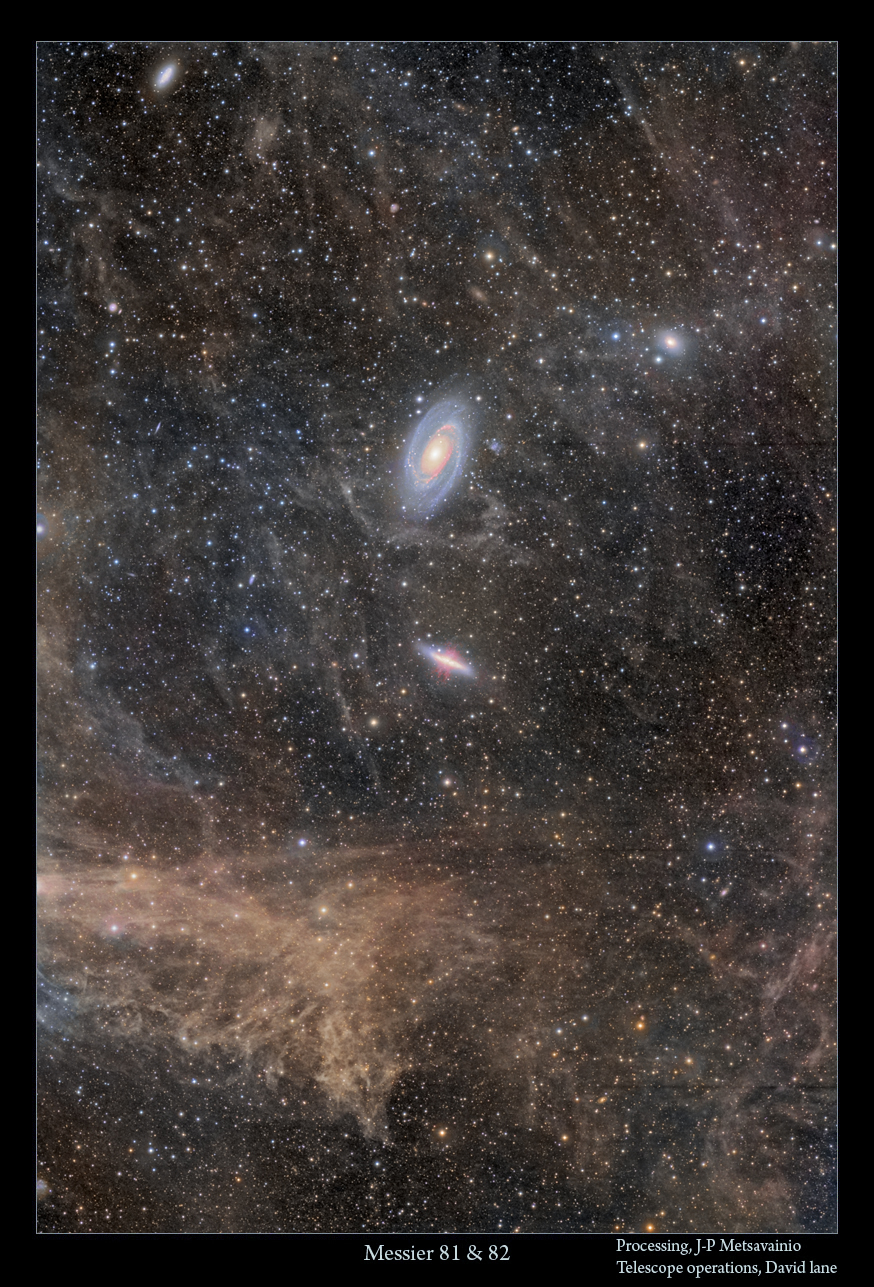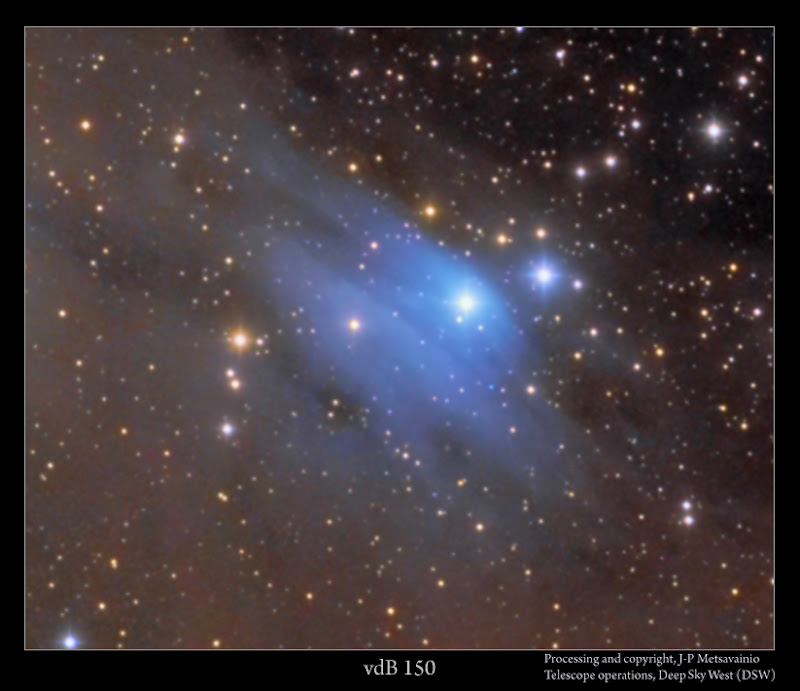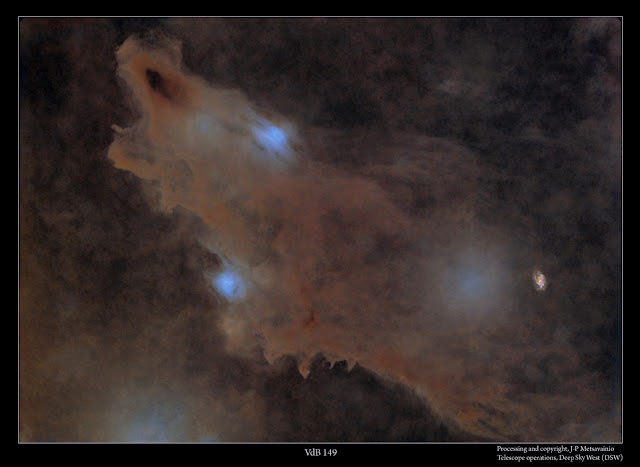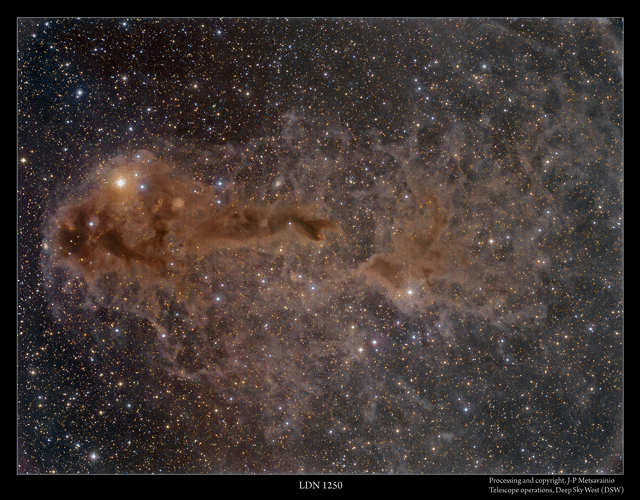COPYRIGHT, PLEASE NOTE
All the material on this website is copyrighted to J-P Metsavainio, if not otherwise stated. Any content on this website may not be reproduced without the author’s permission.
BUY A MUSEUM QUALITY POSTER
BUY A POSTER:https://astroanarchy.zenfolio.com/
Friday, September 25, 2015
Astro Anarchy gets published
The Cnet published an article about Messier 31, the Great galaxy of Andromeda, photo.
Photo of Messier 31 is produced by collaboration between David Lane and me.
You can read the Cnet article by Michelle Starr from
The Wired noticed us too
Ten must-read articles for 25 September
Our photo is number five on the list
Labels:
publications
Thursday, September 24, 2015
Messier galaxies, M81-M82, with integrated flux nebula
A new collaboration image with David Lane. Beside beeing a deep sky astrophotographer he is also a master of landscape astrophotographing, please, have a look at his homepage: http://www.davelaneastrophotography.com/
Image acquisition is made by David Lane. He sent a massive amount of data to me to process and here is the result, Messier galaxies 81 and 82 with a large amount of dim integrated flux nebula at front of them.
Total exposure time is around 40 hours with the William Optics GT81 telescope and SBIG STL-1100 3 CCD-camera.
Total exposure time is around 40 hours with the William Optics GT81 telescope and SBIG STL-1100 3 CCD-camera.
Messier 81 and 82 with an integrated flux nebula
Click for a large photo
So dusty, don't they ever clean up there...
An experimental starless photo
Click for a large photo
Brighter dots in this starless image are more distant galaxies
A horizontal composition
Click for a large photo
A better resolution photo
Technical details
Data acquisition, David Lane
Image processing, J-P Metsavainio
Processing workflow
Deconvolution with a CCDStack2 Positive Constraint, 27 iterations, added at 33% weight
Color combine in PS CS3
Levels and curves in PS CS3.
Imaging optics
William Optics GT81
Camera
SBIG STL-1100 3 CCD
Exposure times
Total ~40h
Labels:
galaxy images
Wednesday, September 23, 2015
Messier 31, M31, the Great Galaxy of Andromeda
Another collaboration image, this time with David Lane. He is also a master of landscape astrophotographing, please, have a look at his homepage: http://www.davelaneastrophotography.com/
Image acquisition is made by David Lane. He sent a massive amount of data to me to process and here is the first result, the Great Galaxy of Andromeda with 37 hours of exposure time.
Messier 31, M31, the Galaxy of Andromeda
Click for a large image
A deep H-alpha boosted LRGB exposure of the Galaxy of Andromeda
Large resolution detail from the image above
Click for a large image
Dust lanes of Andromeda
A starless view
Click for a large image
This photo shows the M31 as it was seen just outside of our home galaxy, the Milky way. All the stars in the first photo are located in Our galaxy at maximum distance of few tens of thousands light years. M31 lies at distance of about 2.5 million light years. There is 2.5 million light years of nothing between us and Messier 31. Dim dots at the starless image are more distant galaxies and some hundred of globular cluster associated to M31 galaxy .
A vertical composition of M31
A poster format view to the M31
INFO
The Andromeda Galaxy, also known as Messier 31, M31, or NGC 224, is a spiral galaxy approximately 2.5 million light years from Earth. It is the nearest major galaxy to the Milky Way.
The Milky Way and Andromeda are expected to collide in 3.75 billion years, eventually merging to form a giant elliptical galaxy or perhaps a large disk galaxy.
At 3.4, the apparent magnitude of the Andromeda Galaxy is one of the brightest of any of the Messier objects, making it visible to the naked eye on moonless nights even when viewed from areas with moderate light pollution. It has an apparent diameter of six times as wide as the full Moon
An experimental test
This funny looking image is just stretched vertically to try to show the actual round shape of the galaxy.
It looks like a barred spiral to me.
Technical details
Data acquisition, David Lane
Image processing, J-P Metsavainio
Processing workflow
Deconvolution with a CCDStack2 Positive Constraint, 27 iterations, added at 33% weight
Color combine in PS CS3
Levels and curves in PS CS3.
Imaging optics
William Optics GT81
Camera
SBIG STL-1100 3 CCD
Exposure times
Luminance, 18h
H-alpha, 1h
Red = ~6h
Green = ~6h
Blue = ~6h
Total 37h
Labels:
galaxy images
Thursday, September 17, 2015
APOD by NASA, Astro Anarchy gets published
Astronomy Picture of the Day
My shot of the Pickering's Triangle in Veil Nebula was selected today as an APOD (Astronomy Picture of the Day) by NASA. You can see the NASA page here: http://apod.nasa.gov/apod/ap150917.html
Pickering's Triangle
Be sure to click for a large image!
Be sure to click for a large image!
INFO
Original blog post about this image, with technical details, can be seen here:
You can buy a real, museum quality, photographic print from HERE
This is my eighth APOD, older ones can be seen here:
http://apod.nasa.gov/apod/ap141115.html
http://apod.nasa.gov/apod/ap131214.html
http://apod.nasa.gov/apod/ap110218.htmlhttp://apod.nasa.gov/apod/ap141115.html
http://apod.nasa.gov/apod/ap131214.html
Labels:
publications
Tuesday, September 15, 2015
Pickering's Triangle, my first light for the Autumn season 2015
This is my opening photo for the Autumn season 2015. I started this imaging project a year ago, at Autumn 2014. Back then I shot 12h of the light form an ionized oxygen, O-III. This is a two frame mosaic of the Veil Nebula supernova remnant. This Autumn I shot 5h of light from an ionized hydrogen, H-alpha. I was able to make a Hubble palette image by using the S-II from my older wide field photo of the Veil Nebula.
Pickering's Triangle
Be sure to click for a large image!
Part of the two frame mosaic of the Veil Nebula supernova remnant, the Pickering's Triangle.
Colors are from the ionized elements, Hydrogen, Sulfur and Oxygen.
S-II = Red, H-alpha = Green and O-III = Blue.
(A content of this O-III image can be seen as a blueish color at image above.)
Pickering's Triangle in light of an ionized oxygen, O-III, alone.
A closeup
Click for a large image
A less zoomed version
Click for a large image
The whole two frame mosaic
Click for a large image
A two frame mosaic of the Pickering's Triangle
A wide field photo of the Veil Nebula supernova remnant
The Pickering's Triangle can be see at one o'clock position.
My blog post about the wide field shot can be seen HERE.
Technical details
Processing work flow
Image acquisition, MaxiDL v5.07.
Stacked and calibrated in CCDStack2.
Deconvolution with a CCDStack2 Positive Constraint, 33 iterations, added at 33% weight
Color combine in PS CS3
Levels and curves in PS CS3.
Imaging optics
Celestron Edge HD 1100 @ f7 with 0,7 focal reducer for Edge HD 1100 telescope
Mount
10-micron 1000
Cameras and filters
Imaging camera Apogee Alta U16 and Apogee seven slot filter wheel
Guider camera, Lodestar x2 and SXV-AOL
Astrodon filter, 5nm H-alpha
Astrodon filter, 3nm O-III
Astrodon filter, 3nm S-II
Exposure times
H-alpha, 15 x 1200s = 5h
O-III, 36 x 1200s binned = 12h (Autumn 2014)
S-II, from my older wide field photo of the Veil Nebula = 3h
Total 20h
Labels:
Narrowband color images,
nebula
Tuesday, September 8, 2015
IC 4603, at the core of the colorful Scorpion
This is a third image produced as a collaboration with me and Eric Recurt. The data is shot from his observatory at Tenerife. The Observatory locates at 2400 m altitude and at 28 degrees North. The site has excellent seeing conditions, 0.8 " on average and can be below 0.3 "
IC 4603, the core region of the Rho Ophiuchi complex in the constellation Scorpion
Click for a full size image
This is a broadband LRGB natural color image of the IC 4603 from a remote observatory in Tenerife.
Full scale closeups
Click for a full size image
Technical details
This is a broadband LRGB natural color image of the IC 4603 from a remote observatory in Tenerife.
Full scale closeups
Click for a full size image
Technical details
Processing workflow
Deconvolution with a CCDStack2 Positive Constraint, 27 iterations, added at 33% weight
Color combine in PS CS3
Levels and curves in PS CS3.
Imaging optics
340mm F3.3 astrograph
Mount
ASA DDM 85
Cameras and filters
FLI PL 16803
Exposure times
Luminance, 10 x 300s
Red = 10 x 180s
Green = 9 x 180s
Blue = 8 x 180s
Total 2h 11min
Labels:
nebula
Sunday, September 6, 2015
"Howling Wolf" Nebula, vdB 149, vdB 150, LDN 1235 and PGG 67671
The second photo published from the Deep Sky West observatory. Lights are taken under a very dark skie. Unlike in my current light polluted location, it's now possible to image broadband targets, galaxies, reflection nebulae and dark nebulae! HERE is some more info about the Deep sky West Observatory.
I gave the nickname "Howling Wolf" after I saw the photo first time in my monitor. At the end of this blog post, there is an explanation for the nickname.
VdB 149 and companions in the constellation Cepheus
Click for a large image
Beautiful collection of dark and reflection nebulae in Cepheus including a galaxy. This is a broadband LRGB image in natural colors.
Full resolution details from the image above
LDN 1235
vdB 150
vdB 149
vdB 149 and some interesting shapes in the dust cloud
Click for a large photo
PGG 67671
An experimental starless version
Click for a large photo
A starless version to show better the actual dust cloud
Howling Wolf
This is how I see the photo in my head.
An animated GIF, stars vs starless
Click for a large image
Technical details
Processing workflow
Stacked and calibrated in CCDStack2.
Deconvolution with a CCDStack2 Positive Constraint, 27 iterations, added at 33% weight
Color combine in PS CS3
Levels and curves in PS CS3.
Imaging optics
Takahashi FSQ-106EDXIII
Mount
Astro-Physics Mach1AP GTO with GTOCP3
Cameras and filters
QSI683WSG
Astrodon Luminance Tru-Balance E-Series Gen
Astrodon Red Tru-Balance E-Series Gen 2
Astrodon Green Tru-Balance E-Series Gen 2
Astrodon Blue Tru-Balance E-Series Gen 2
Exposure times
Luminance, 32 x 900s = 8h
Red = 13 x 900s = 3.25h
Green = 12 x 900s = 3h
Blue = 5 x 900s = 1.25h
Total 15.5h
Labels:
nebula
Friday, September 4, 2015
Half a million stars and Messier 7
This is a second image produced as a collaboration with me and Eric Recurt. The data is shot from his observatory at Tenerife. The Observatory locates at 2400 m altitude and at 28 degrees North. The site has excellent seeing conditions, 0.8 " on average and can be below 0.3 "
Messier 7, "My God, it's full of stars!"
Be sure to click for a full size image! (Quote, 2001: A Space Odyssey)
Just right from the Messier 7 locates a dark nebula B 287. In this image is visible about 500.000 stars of our Milky Way. Click the photo to see all of them! (2100x2100 pixels)
A closeup of Messier 7
Click for a large image
Planetary nebula PN Hf2-1
Click for a large image
Planetary Nebula PN Hf2-1 is a blue dot at middle of the image area.
INFO
Technical details
Processing workflow
Deconvolution with a CCDStack2 Positive Constraint, 27 iterations, added at 33% weight
Color combine in PS CS3
Levels and curves in PS CS3.
Imaging optics
340mm F3.3 astrograph
Mount
ASA DDM 85
Cameras and filters
FLI PL 16803
Exposure times
Luminance, 11 x 300s = 55min
Red = 6 x 180s = 18min
Green = 6 x 180s = 18min
Blue = 6 x 180s = 18min
Total 1h 49min
Labels:
star clusters
Rosette Nebula from a professional observatory in Tenerife
This is my second remote image this year but with different partner. I get contacted by Eric Recurt and we started a cooperation between us. The imaging season, up here 65N, hasn't started yet. This is a great way to produce high quality photos during my mandatory summer pause.
Observatory
The Observatory locates at 2400 m altitude and at 28 degrees North. The site has excellent seeing condition usually below 1" year , 0.8 " on average to be exact and can be below 0.3 "
Instruments
The instrument is a 340mm F3.3 astrograph with FLi Pro 16803 + Centerline 10 position filter wheel on a DDM 85 mount .
The first published photo from Teneriffe,
NGC 2244, the Rosette Nebula
Click for a large image
This is a broadband LRGB image of the Rosette Nebula from a remote observatory in Tenerife.
A closeup
Click for a large image
Technical details
Processing workflow
Deconvolution with a CCDStack2 Positive Constraint, 27 iterations, added at 33% weight
Color combine in PS CS3
Levels and curves in PS CS3.
Imaging optics
340mm F3.3 astrograph
Mount
ASA DDM 85
Cameras and filters
FLI PL 16803
Exposure times
Luminance, 10 x 600s = 1h 40min
Red = 5 x 300s = 25min
Green = 5 x 300s = 25min
Blue = 5 x 300s = 25min
Total 2h 55min
An experimental starless version as an animation
Labels:
nebula
Thursday, September 3, 2015
Something new! My first light from The Deep Sky West (DSW) remote observatory
The imaging season, up here 65N, hasn't start yet. I have had a wonderful opportunity to use couple of remote telescopes. One in Canary islands and the other in New Mexico. I'll publish more images from both telescopes soon.
The first photo published is from Deep Sky West observatory. It's taken under a very dark sky. Unlike in my current light polluted location, it's now possible to image broadband targets, like galaxies, reflection nebulae and dark nebulae! HERE is some more info about the Deep sky West Observatory
LDN 1250 & 1251
A natural color LRGB photo of the dark nebula LDN 1250 in Cepheus
Closeups
Click for a large image
Galaxy behind the dust
Magnitude 16 galaxy at middle of the image is PGC 166755, size 1.3 x 0.6 arcmin.
An experimental starless photo of LDN 1250 & 1251 as an animation
The nebula stands out nicely without stars. There are couple of much more distant galaxies at the image. One at right most left and the other at upper left from middle.
INFO
Image contains objects LDN 1251, LBN 558, PGC 69472, PGC 166755
This low mass star forming region in Cepheus is an extended cloud of gas and dust. There are two galaxies visible in the image. At most left middle lays magnitude 15.5 galaxy PGC 69472, angular dimensions are
2.1 x 1.6 arcminutes. Galaxy PGC 166755 At middle left shines at magnitude 16 and has size of 1.3 x 0.6 arcminutes.
Technical details
Processing workflow
Stacked and calibrated in CCDStack2.
Deconvolution with a CCDStack2 Positive Constraint, 27 iterations, added at 33% weight
Color combine in PS CS3
Levels and curves in PS CS3.
Imaging optics
Takahashi FSQ-106EDXIII
Mount
Astro-Physics Mach1AP GTO with GTOCP3
Cameras and filters
QSI683WSG
Astrodon Luminance Tru-Balance E-Series Gen
Astrodon Red Tru-Balance E-Series Gen 2
Astrodon Green Tru-Balance E-Series Gen 2
Astrodon Blue Tru-Balance E-Series Gen 2
Exposure times
Luminance, 26 x 900s = 6.5h
Red = 14 x 900s = 3.5h
Green = 14 x 900s = 3.5h
Blue = 14 x 900s = 3.5h
Total 17h
A single calibrated and stretched 15 min. Luminance frame as it comes from the camera
Click for a large image
Labels:
nebula
Subscribe to:
Comments (Atom)




















































